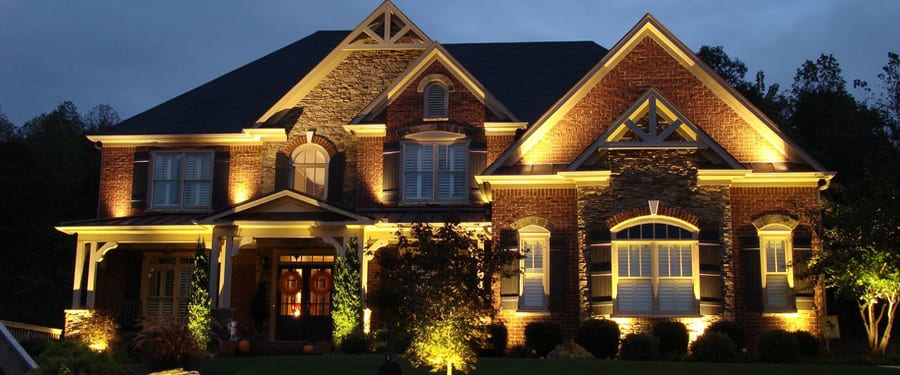Proper outdoor lighting for your yard is an excellent way to show off the absolute best parts of your home while amplifying holiday spirit. But, how do you know where to place this outdoor lighting in order to achieve the best effect?
Here are a few easy and effective outdoor lighting methods — from the outdoor lighting experts — that will help you transform your outdoor living spaces:
Highlighting
Highlighting is known as one of the most common outdoor lighting techniques, and involves placing a spotlight at the base of any outdoor feature, such as a garden statue or tree.
You can experiment with a wide range of distances and angles for your outdoor lighting fixture, in order to find the best design to suit your unique landscape.
Silhouetting
You have the ability to create an illuminated backdrop by placing light fixtures aimed toward an adjacent wall of behind outdoor features. This lighting will then create an outline (or “silhouette”) of whatever object is in front of it.
The silhouetting technique, itself, is ideal for showcasing dense plants, and has an especially striking appearance when the sun sets.
Shadowing
Similar to silhouetting, shadowing involves positioning fixtures in a way to allow light to reflect off a wall. However, unlike silhouettes, this particular lighting technique creates softer shadows.
This is particularly useful for use with objects that move or delicate foliage, such as a tree in the wind. The lighting will make the shadows appear as if they are dancing on the walls of your home.
Wall-washing
For a more smoothing and evenly distributed glow you can use a wall-washing technique. This consists of placing lighting fixtures — typically wide angle flood lights — with a sideways angle a few feet away from whatever feature you want to showcase.
Shining your lighting along the side of a wall will maintain a consistent look and invoke a more subtle, ambient effect for your home.
Moonlighting, and Downlighting
A moonlight technique consists of placing a fixture with a full glare guard at a downwards angle, from within a tree. The moonlight effect emphasizes the features you have on the ground, and is perfect for showing off natural beauty and patterns in your landscaping.
Similar to moonlighting, downlighting involves placing a fixture high up while casting it downwards over a large area in order to create a brighter and less subtle effect.
Contrasting, Accenting, Path-lighting
You can place spotlight fixtures closer to a structure or feature in order to create a bolder effect with greater contrast. Any lighting that has the ability to draw attention to a part of your landscaping is called accent lighting, and can be accomplished through the use of a narrow light, which will be angled downward to reveal a particular plant, feature or design.
Path-lighting consists of lighting driveways, patios and walkways. You should always position path lights carefully to ensure they provide adequate illumination while not being in the way of walking at the same time. Good path lighting significantly helps determine the pacing of a pathway.



